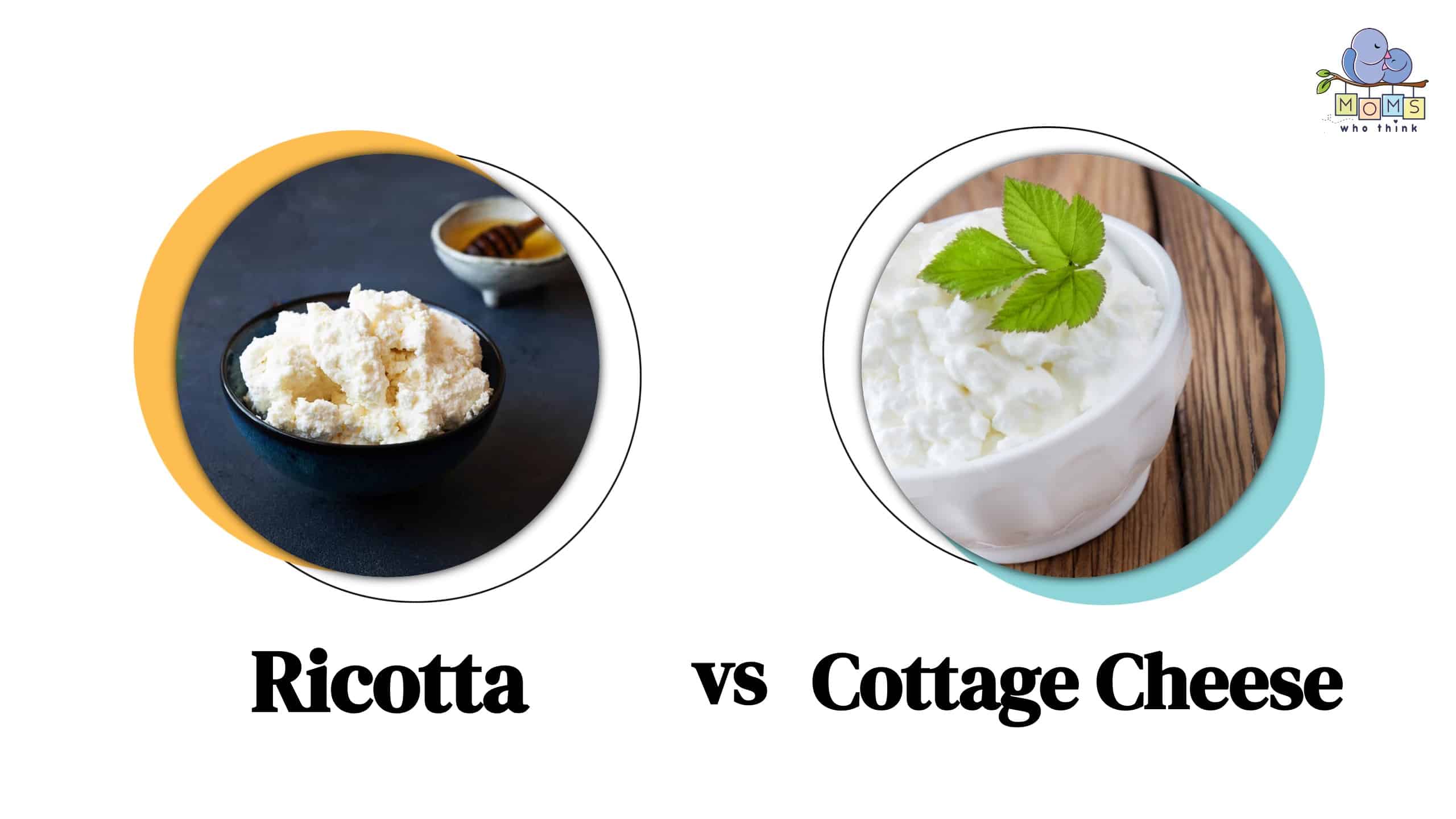One of the biggest struggles for any busy parent is finding quick and easy meal ideas that are also nutritious. As you've worked to find meals your family loves, you've likely come across two popular cheeses: ricotta and cottage cheese. While these two cheeses seem similar and are often confused, they actually have numerous differences.
In this post, we'll dive into the delicious details of both ricotta and cottage cheese and explore what sets them apart. Understanding the differences between each cheese will help you know which one to use and which one is best as you whip up your next dish.
Ricotta vs. Cottage Cheese: What Is the Difference?
While both ricotta and cottage cheese are fresh cheeses that are likely found near each other in the grocery store, they are far from the same. Some important differences are that ricotta is smooth and slightly sweet tasting, while cottage cheese appears lumpy and has a tangier, salty flavor. In addition, ricotta has more calories and fat grams per serving compared to cottage cheese. Finally, ricotta is made with whey (the byproduct of other cheeses) that's separated from curds while cottage cheese is made from milk solids.
Let's take a closer look at each cheese to understand what sets them apart.
Rivotta vs. Cottage Cheese Nutrition: Calories, Fats, Protein
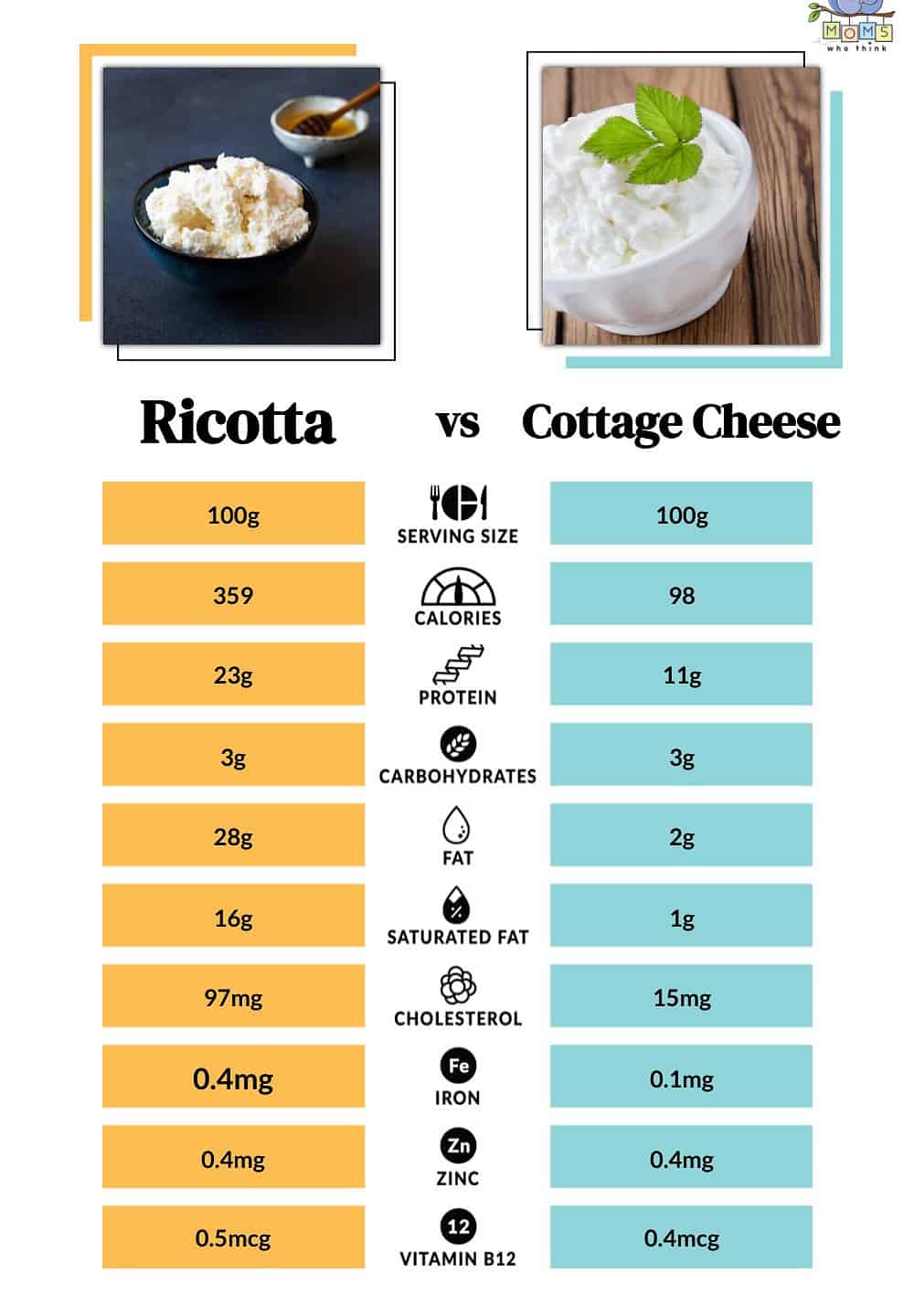
Ricotta cheese has much higher fat content compared to cottage cheese
©
The primary difference between ricotta cheese and cottage cheese nutrition is that ricotta has significantly more calories from fat. Do keep in mind that cottage cheese can be made with different varieties of milk fat. Regular cottage cheese will have higher fat than reduced fat or nonfat cottage cheese. Both ricotta and cottage cheese are low in carbohydrates.
What Is Ricotta?
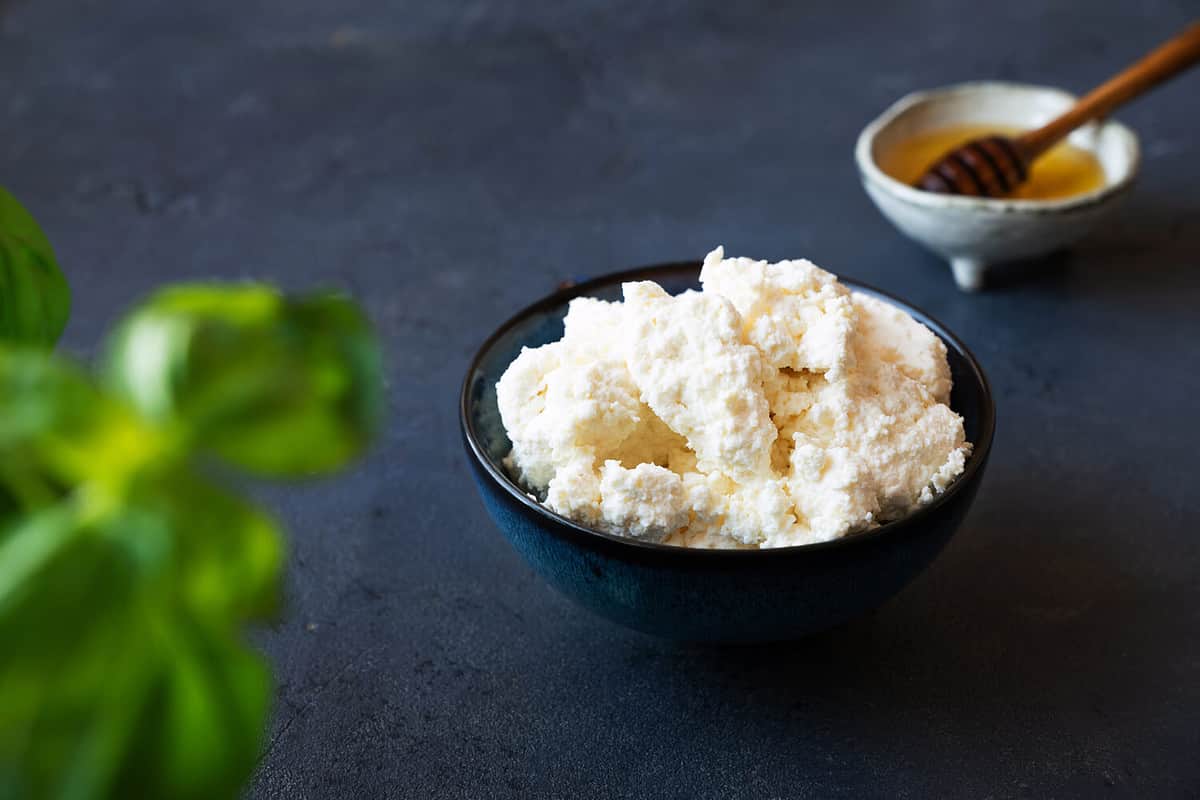
Ricotta is typically soft and creamy with a grainy texture.
©Pedal to the Stock/Shutterstock.com
Ricotta cheese is soft and creamy with a mild, somewhat sweet flavor and grainy-like texture. It's also made with whey that's separated from the curds during the cheese-making process.
Origin
According to Science Direct, ricotta originates from Italy and means “recooked” in Italian. This term refers to the fact that ricotta is a whey cheese, as in, it's made by reheating the whey left over from making other cheeses. In Italy and other parts of the world, this cheese is traditionally made from cow's, sheep's, or goat's milk. In the United States, it's most commonly made from cow's milk.
Flavor
It's important to note that there are various types of ricotta cheese. Fresh ricotta (which is what we're talking about here), is rich and creamy and has a mild taste. Aged ricotta, also known as ricotta salata, is drier, saltier, and has a stronger flavor. The flavor can also change depending on what kind of milk is used during the production process.
Texture and Appearance
Ricotta is known for its signature grainy-like texture. Because of ricotta's soft, fresh, and creamy appearance, it has a much lighter feel. The lightness comes from the cheese being lower in fat as it only contains the fat that's left over in the whey used to make it.
How Ricotta Is Made
In the United States, fresh ricotta is made from whole cow's milk. An acid is added to the milk which creates curds. The curds are then skimmed off the top and what's leftover is ricotta.
In Italy and other parts of the world, however, ricotta is typically made with the whey that's leftover from other cheeses with a small amount of milk added. The leftover whey usually contains rennet already. It's then heated (which is where the “recooked” term comes into play), which creates curds. The curds are strained and formed together to make fresh ricotta.
As mentioned, there are various types of ricotta and each has a slightly different production process. While fresh ricotta is what we're talking about today, other aged and smoked variations also exist, including:
- Ricotta Salata, which is an aged and firmer, saltier version of the fresh cheese.
- Ricotta Infornata, a baked version of the cheese that is popular in Sicily.
- Smoked Ricotta, which has a smokey and savory flavor.
- Ricotta Forte, which has the strongest flavor due to the long aging process of about a year.
Popular Uses
Because of ricotta's versatility, it can be used in both savory and sweet dishes. It's often found in Italian dishes due to its Italian roots and is used in a variety of ways. Ricotta is most popularly used as a filling for pasta dishes like ravioli and cannoli or as a topping for pizzas. It can also be found as a lighter ingredient in desserts like cheesecake and tiramisu.
What is Cottage Cheese?
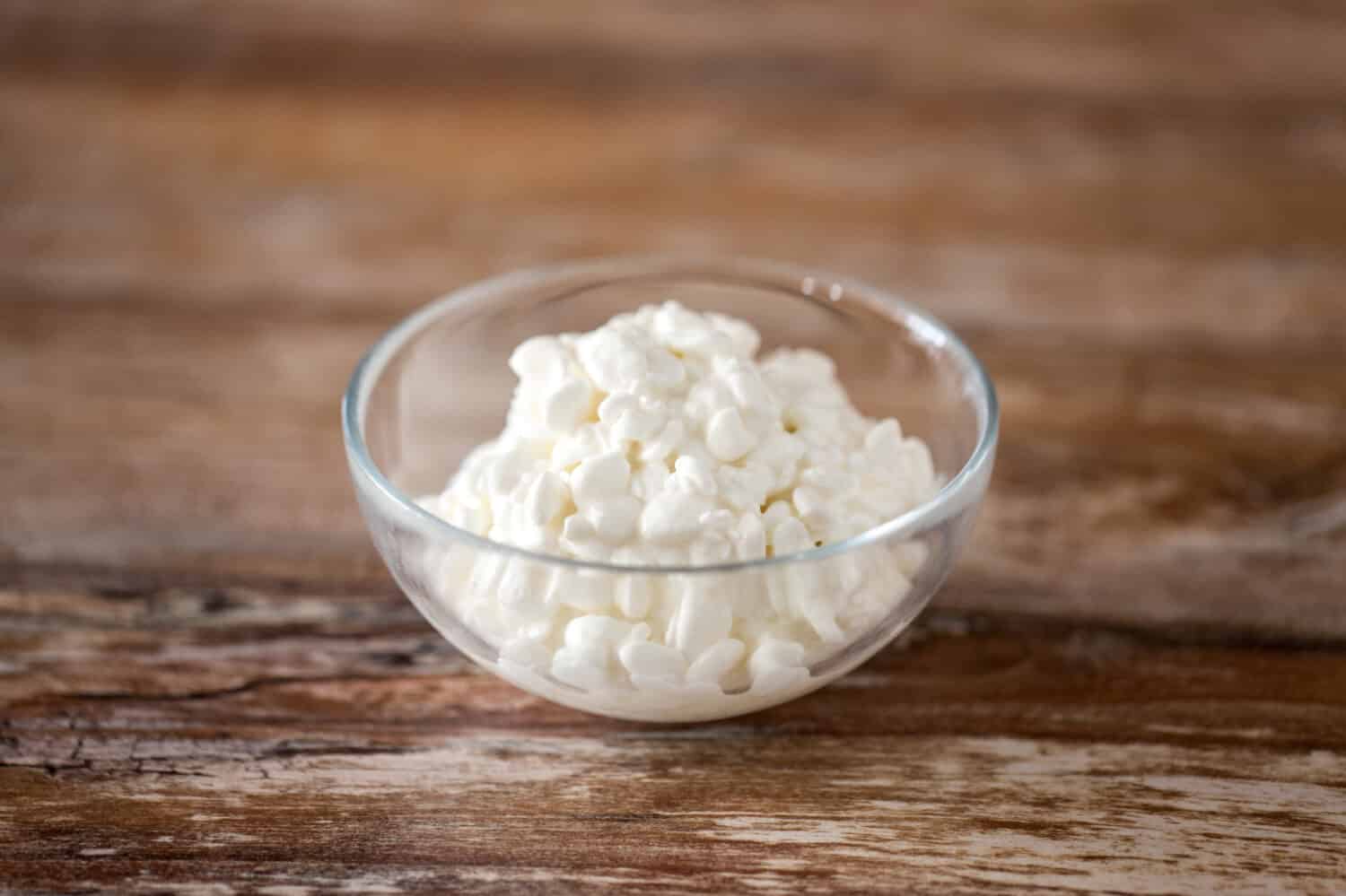
Cottage cheese has a lumpy appearance.
©Ground Picture/Shutterstock.com
Cottage cheese is a fresh cheese known for its signature lumpy and curdy appearance. It's essentially made of curdled milk that is then rinsed away from the whey, which is what gives it a lumpy and creamy texture.
Origin
According to the Brittanica encyclopedia, cottage cheese is believed to have gotten its start from early European settlers in America, even though the official terminology of “cottage cheese” didn't get its start until the 1800s. The name comes from how the cheese is made as many farmhouses or cottages would make this cheese from their excess milk.
Flavor
The flavor of cottage cheese may vary depending on its production process and the brand manufacturing it. In general, however, cottage cheese tends to have a mild, somewhat tangy flavor. It can also be milky and slightly salty.
Texture and Appearance
Again, depending on the manufacturing process, cottage cheese can range in curd size and creaminess. The fat content can also alter the texture and appearance. Low-fat cottage cheese can contain slightly more liquid while full-fat cottage cheese can appear richer and creamier.
Regardless of the curd size, cottage cheese is known for its signature lumpy, “curds and whey” appearance.
How Cottage Cheese Is Made
Cottage cheese is made by curdling cow's milk with an acidic substance, like vinegar or lemon juice. The curds are then drained and rinsed, creating the characteristic lumpy and creamy texture that cottage cheese is known for.
It's also important to note that whole milk, part-skim, and skim milk can all be used in the production of cottage cheese. What type of milk is used will affect the cheese's overall fat content and richness.
Popular Uses
Cottage cheese is an extremely versatile cheese. It not only works well in salads and dips, but it also pairs well with fruit, toast, or crackers. Unlike ricotta, cottage cheese is sometimes treated as more of a yogurt for smoothies or a protein-packed snack eaten plain. Like ricotta, however, this cheese can be baked and used in recipes like lasagna and stuffed shells.
Can You Substitute Ricotta for Cottage Cheese?
In short, yes, these cheeses can be easily substituted for each other. However, keep in mind that because these cheeses are still different in texture and flavor, substituting one for the other may alter your finished dish.
When substituting ricotta for cottage cheese, keep in mind that ricotta is typically smoother and creamier so your dish may have a more uniform texture. And when substituting cottage cheese for ricotta, keep in mind that cottage cheese is typically lumpier and has a tangier, less mild flavor than ricotta.
Other Substitutes for Ricotta and Cottage Cheese
If you're in a pinch and have neither of these cheeses on hand, or you simply want to try something different, here are a few other options you can use as replacements:
Greek Yogurt
Greek yogurt works well as a substitute for cottage cheese due to its similar tangy flavor and creamy texture.
Cream Cheese
Due to its creamy and rich flavor and appearance, this cheese can work well as a replacement in recipes like cheesecakes, dips, and spreads. Keep in mind, however, that cream cheese has a much higher fat content than either ricotta or cottage cheese.
Mascarpone
Mascarpone can have a similar texture and flavor to ricotta, making it a good substitute in many Italian dishes. It also tends to be higher in fat, however, so keep that in mind as you bake.
Ricotta Recipes
Print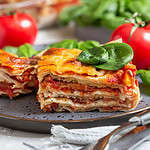
Vegetarian Lasagna
Ingredients
1 container (32 oz.) ricotta cheese
3 cups shredded mozzarella cheese, divided
1/2 cup grated Parmesan cheese, divided
1/4 cup chopped fresh parsley
1 egg, beaten
1 jar (24 oz.) Tomato and Basil Pasta Sauce
12 lasagna noodles, cooked
Instructions
1. Heat oven to 350°F.
2. Mix ricotta, 2 cups mozzarella, 1/4 cup Parmesan, parsley and egg until blended.
3. Spread 3/4 cup pasta sauce onto bottom of 13×9-inch baking dish; top with 3 lasagna noodles and 1/3 of the ricotta mixture.
4. Repeat layers of sauce, noodles and ricotta mixture twice; cover with remaining noodles and sauce.
5. Sprinkle with remaining mozzarella and Parmesan.
6. Bake 45 min. or until heated through. Let stand 15 minutes before slicing and serving with warmed Italian bread.
Cottage Cheese Recipes
Final Thoughts
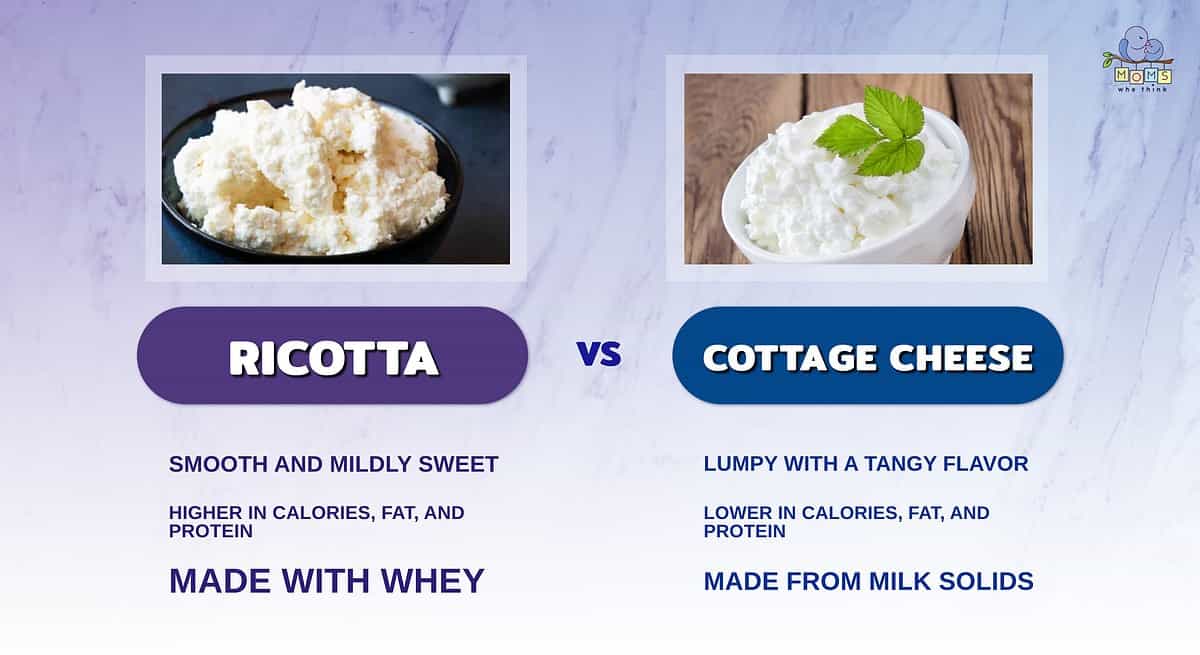
- Ricotta's smooth and mildly sweet taste may be what makes it a preferred ingredient in lasagna, compared to cottage cheese's lumpy texture and tangy taste.
- Ricotta has a lot more calories and fat than cottage cheese, but also has more protein. Cottage cheese is likely the better option for those on a diet.
- Cottage cheese is made from milk solids, while ricotta is made from whey, the byproduct of other cheeses.
While both ricotta and cottage cheese have a similar appearance, they have definite differences in taste and texture. Cottage cheese is lumpy, tangy, and slightly sour, while ricotta is smoother, creamier, and tends to have a more mild flavor.
Whether you are looking to make a high-protein snack, a creamy dip, or a decadent dessert, both cottage cheese and ricotta can offer a unique flavor and texture to your next dish.
